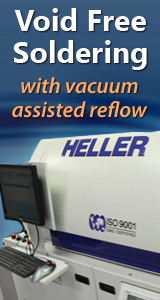In SMT PCB production, solder paste printing is a critical step. Since the solder paste is used to directly form the soldering joint, the quality of solder paste printing affects the performance and reliability of the surface mount assembly. Quality solder paste printing guarantees a quality solder joint and final product. Statistics demonstrate that 60% to 90% of soldering defects are related to solder paste printing defects. So it is very important to understand what causes defects in solder paste printing.
The following table lists an analysis of solder paste printing defects:
ItemFactorsAnalysis
1Solder PastePowder formationThe irregular shape of solder powder will easily clog stencil apertures. This will cause a big slump after printing. It can also cause solder ball and short bridge defects after reflow.
A spherical shape is best, especially for fine-pitch QFP printing.
Particle SizeIf the particle size is too small, the results will be poor paste adhesion. It will have a high oxygen content and cause a solder ball after reflow.
The particle size should be controlled to about 25 ~ 45 ?m in order to meet the requirements for fine-pitch QFP soldering, If the partical size desired is 25 to 30 ?m, it should applied with less than 20 ?m solder paste for an ultra fine-pitch IC.
FluxFlux contains a thixotropic agent, which allows the solder paste to have pseudoplastic flow characteristics. Since the viscosity decreases when the paste passes through the stencil apertures, the paste can be applied to the PCB pads rapidly. When the external force stops, the viscosity will recover to ensure no deformation occurs.
The flux in the solder paste should be controlled to between 8 and 15 percent. A lower flux content will result in excess amount of solder paste applied. Conversely, a high flux content will result in an insufficient amount of solder applied.
2StencilThicknessA stencil that is too thick will cause a solder bridge short.
A stencil that is too thin will cause an insufficient solder to be applied.
Aperture sizeWhen the stencil aperature size is too big, a solder bridge short can occur.
When the stencil aperature size is too small, and insufficient solder paste will be applied.
Aperture shapeIt is best to use a circular-shaped stencil aperture design. Its size should be slightly smaller than the PCB pad size, preventing a bridging defect during reflow.
3Printing parametersBlade Angle Speed & PressureThe blade angle affects the vertical force applied on the solder paste. If the angle is too small, the solder paste will not be squeezed into the stencil apertures. The best blade angle should be set around 45 to 60 degrees.
A higher the printing speed means that less time will be spent in applying the solder paste through the stencil aperture surface. A higher printing speed will cause insufficient solder to be applied.
The speed should be controlled to around 20 ~ 40 mm/s.
When the blade pressure is too small, it will prevent the solder paste from being cleanly applied to the stencil.
When the blade pressure is too high, it will result in more paste leakage. The blade pressure is typically set at about 5N ~ 15N / 25mm.
4Printing process controlPCB moistureIf the PCB moisture is too high, the water under the solder paste will quickly evaporate, causing the solder to splash and creating solder balls.
Dry the PCB if it was fabricated over 6 months ago. The recommended drying temperature is 125 degrees for 4 hours.
Paste storageIf the solder paste is applied without a temperature recovery period, the water vapour in the surrounding environment will condense and penetrate the solder paste; this will cause the solder to splash.
Solder paste should be stored in a refrigerator at 0 to 5 degrees.
Two to fours hours before use, place the paste in a normal temperature environment.
When SMT matter to your business, partner with Flason. Where innovation takes form.
reflow oven lead free reflow oven LED strip reflow oven dual rail reflow oven custom reflow oven China reflow ovenSMT Peripheral Equipment SMT reflow oven
wave soldering machine pick and place machine lead free wave soldering machine custom wave soldering machinecustom pick and place machine SMT Assembly line
SMT Reflow Oven Manufacturer Wave Soldering Mahchine Manufacturer Pick and Place Machine Manufacturer Reflow Oven Manufacturer SMT Spare Parts LED Pick and Place Machine
Andrey: sales@flason-smt.com Wechat whatsapp:+86 13691605420
Keywords: Reflow Oven SMT Reflow Oven Wave Soldering Machine SMT Stencil Printer Pick and Place Machine SMT Inspection machine SMT Assembly Line SMT Peripheral Equipment SMT Spare Parts reflow oven lead free reflow oven LED strip reflow oven dual rail reflow oven Custom reflow oven China reflow oven SMT Peripheral Equipment SMT reflow oven wave soldering machine pick and place machine lead free wave soldering machine custom wave soldering machine custom pick and place machine SMT Assembly line SMT Reflow Oven Manufacturer Wave Soldering Mahchine Manufacturer Pick and Place Machine Manufacturer Reflow Oven Manufacturer SMT Spare Parts LED Pick and Place Machine
For More information,visit US: Reflow Oven Manufacturer or SMT Reflow Oven Wave Soldering Machine SMT Stencil Printer Pick and Place Machine SMT Inspection machine SMT Assembly Line SMT Peripheral Equipment SMT Spare Parts SMT Feeder SMT Nozzle Feeder storage cart USB Flash Drive Manufacturer wave soldering machine manufacturer Email us: sales@flason-smt.com

 »
»





